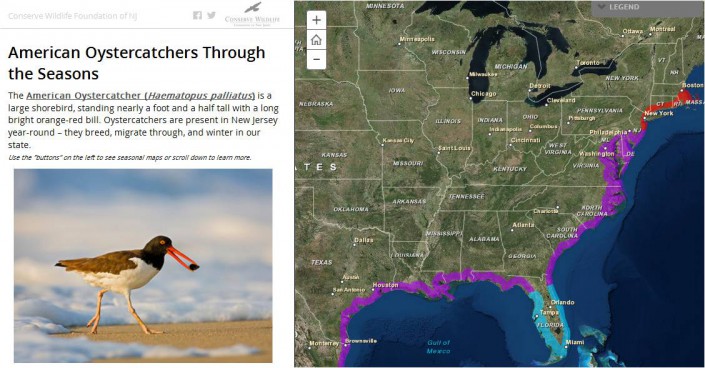Celebrate GIS Day with Conserve Wildlife Foundation of New Jersey
By: Lindsay McNamara, Communications Coordinator
Data nerds rejoice! Today, Wednesday, November 19 is GIS Day. Geographic information systems (GIS) technology helps our wildlife biologists protect rare species throughout New Jersey. GIS technology is used to create our species range maps and other important tools that show where wildlife occur and what habitat they need to exist.
Conserve Wildlife Foundation is a key player in updating the NJ Endangered and Nongame Species Program’s (ENSP) database of rare wildlife species. The database called “Biotics” is a GIS and Oracle-based system developed by NatureServe, the leading source of information on the precise locations and conditions of rare and threatened species and ecological communities in the Western Hemisphere.
Although CWF and ENSP biologists submit a majority of the data on Biotics, we rely on the help of citizen scientists to fully understand the wildlife picture in New Jersey. Do you want to help biologists monitor certain areas of the state and locate the presence of species of concern? Visit our website to learn how you can get involved.
In addition to the Biotics database, GIS was used to create range maps for all 190 species featured on our online field guide! Check it out.
Have you seen our American Oystercatcher Story Map? GIS was used to create that tool as well! A Story Map is a web-based interactive GIS map embedded with all kinds of content, like text, photographs, and video.

“American Oystercatchers Through the Seasons” tells the story about a species of migratory bird, the American Oystercatcher, which spends the summer breeding season along the New Jersey coast, and is present year-round along the southern New Jersey coast. Learn more about our Story Map.
This GIS Day, take a look at all of the maps around you and consider supporting additional Conserve Wildlife Foundation Story Maps!
Discover more from Conserve Wildlife Foundation of NJ
Subscribe to get the latest posts sent to your email.